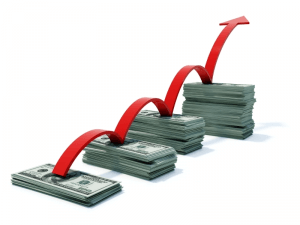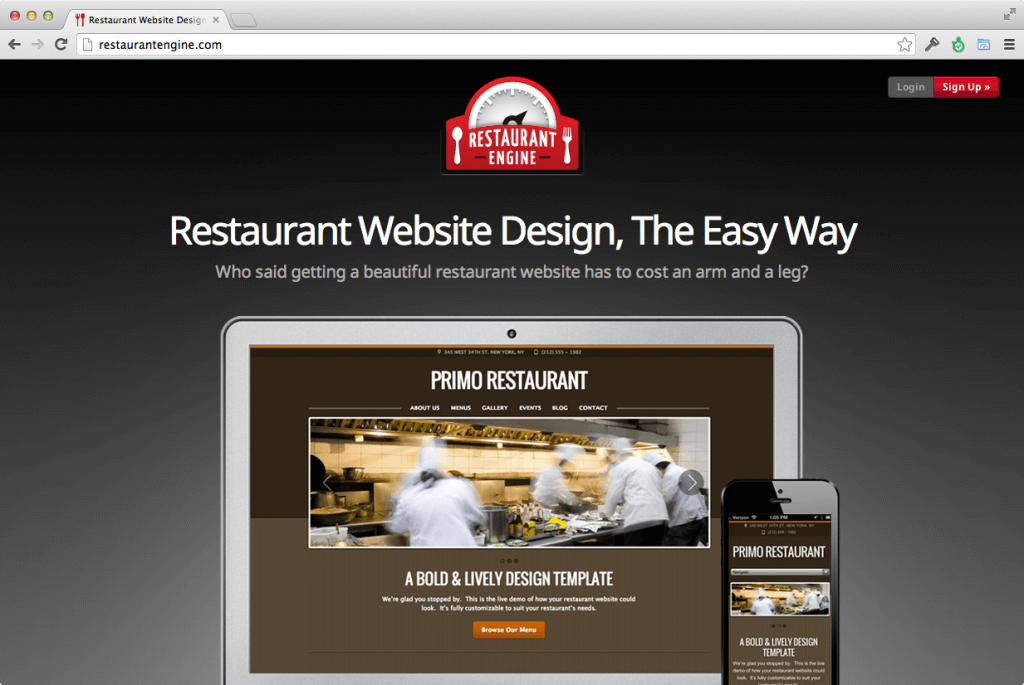Disclaimer: Today’s post is all about how to build your first product. If you’re struggling to find clients or are barely managing to stay in business, I’d recommend working on that first. Here are a few good places to start:
- Cash Flow Tips for Freelancers
- 7 Ways To Get More Clients Through Your Website
- How Freelancers Can Make The Most Of Networking Events
…But if you’re ready to build that first product, read ahead. I’m not going to try to get you to build some sexy startup that will give you a one in a million shot of getting rich, but rather we’ll identify a few concrete steps you can take to build your first product or two, which you’ll treat as an annuity rather than a primary source of income.
What do I mean by an annuity?
When I launched my first product, Planscope, I was pretty disappointed with the income. It took over a year and a lot of effort for it to make any measurable impact in my finances. The problem was that I could make in a few hours of consulting what Planscope brought in each month.

But it was growing, and each month it was making a little more money. And eventually, I realized something: if I’m looking at this as an income replacer, I’m probably going to be disappointed — at least for a few years. But if I classify it as investment with a return rate that outpaces just about anything on Wall Street, it’s a strong win.
I look at my line of products as an investment portfolio. They wax and wane, but together now provide that income replacement that I’ve been going after. But it’s been years in the making.
But you’re probably starting from scratch with nothing. Your only income comes from selling your time. And that’s perfectly fine.
Where to start
Start by looking backward. Look at the transactions that have occured in your career — why have clients and bosses paid you? What about the combination of your skills, your experience, and your time was valuable enough to pay for?
In truth, the real reason you were paid was because there was likely nothing turnkey that could be bought off the shelf to supply what you delivered. Their problem required some custom work in order to be solved.
So, think. Why have you been hired? What did you deliver to your clients and employers that was worth more than what you got paid?
Think deeper.
What could you provide that’s still within the gravitational field of the solutions you’ve delivered? And don’t worry if what you come up with isn’t a 100% solution to a problem or set of problems that your past clients have had. That’s not necessarily the goal here.
My first product
Most people who know my story think that Planscope was my first product. But in reality, I started making money with products when I hosted paid workshops when running my consultancy.
While these workshops still required me to show up and present, it wasn’t a one-on-one engagement. I was able to deliver value to multiple customers simultaneously, and most importantly it was repeatable — I could host the same workshop again and again. The workshops weren’t tailored to the needs of one customer (e.g. a consulting client), but instead something that I priced, marketed, and sold as a product and not as a service. Tyler Young put together a fantastic overview a few months back on how he did just this.
As you read the following case studies, try to reflect on your work and the value you’ve delivered to your clients. How could you do something like what Brian, Pete, and Joanna have done, even if it’s not going to make you hundreds of thousands of dollars right off the bat?
Remember: The goal isn’t income replacement, it’s income diversification. It’s to establish that first win, that payment notification that wasn’t a result of you issuing an invoice.
Example #1: Brian Casel of RestaurantEngine.com
My friend Brian runs a website called RestaurantEngine.com. I’m going to preface this example by making it clear that I don’t think this is a very good first product. It’s BIG. It requires support. It takes a lot of time to build. It’s a software-as-a-service (SaaS) product, which is exactly what Planscope, my first non-workshop product, is.

But Brian found himself working with a lot of restaurants who wanted new websites and new customers. After the bajillionith responsive design or custom menu interface, it became pretty obvious that much of what Brian was doing was repetitive.
So he built Restaurant Engine as a way to make the end result (that new website) of his consulting engagements turnkey. To the customer, they’re getting what they want: that new, sexy site that will help them gain new diners. And Brian’s able to offer this solution at scale for a fraction of his consulting rate.
Most importantly, though, Brian is still consulting. And while I don’t know the details of the type of clients he works with (note to self: ask him), I know that his experience with Restaurant Engine and the value it brings to his brand as a freelancer is well worth it. And the fact that he’s getting paid monthly from a bunch of customers doesn’t hurt, either!
What are some tasks that you do all the time that could be made into a product?
Example #2: Pete Keen of Mastering Modern Payments
Like many of us, Pete has hooked up scores of client websites to payment gateways like Stripe. But unlike just about all of us, he decided to write about it. Recently, he wrote Mastering Modern Payments as an engineer’s go-to guide for the right way to make Stripe work with Ruby on Rails.
He’s made over $10,000 — I don’t know the specifics — but it’s continuing to sell each month. But most importantly, it’s causing his consultancy to be in high demand for clients who need Stripe work done.

Pete’s been able to sell to his peers (people like me, who use Stripe to collect payments for our projects but have no-freakin’-idea if we’re doing it right) and those in the position to hire him (“Oh, this guy wrote THE BOOK on Stripe and Rails? And we’re looking for a consultant who specializes in that…? Where do I make the check out to?”)
The trivial tasks you do all the time — whether they have to do with code, branding, or copy — are immensely valuable for those who don’t possess what it takes to do those things. But just as importantly, a product that reinforces what you do for a living is a great way to bolster your ability to execute in the mind of your (prospective) clients.
What skills or experience do you take for granted, and how could you teach them to someone else?
Example #3: Joanna Wiebe of CopyHackers
What I love about Joanna and her company is that it’s a consultancy that looks, acts, and feels a lot like a product company.
She and her partner, Lance, have courses. They have site and copy review “products”. And they have their series of books, which originally lured me into their web.

Their customers aren’t sourced through traditional business development channels, but rather from the ground up. A client can pick up one of her books for $20 and realize that Joanna et. al really know their stuff, and that hiring the Copyhackers team is a great idea.
And hiring them doesn’t always require negotiation or a contract or whatever else. All that’s needed is to key in your corporate AMEX and buy a “No-Fluff Website Review.”

All of these products are low risk entrypoints into working with Copyhackers on something a bit more substantial. and they’re able to deliver early wins through education and action (e.g. a website review) before the customer becomes a client. This is the ultimate bargaining chip, and while there are thousands of professional copywriters besides Copyhackers I’m willing to bet that their clients want to work with them and only them.
How can you create a honeypot that lures in new clients?
What’s next
Hopefully by now your mind is racing with ideas of ways that you can begin to create your first asset. If you play your cards right (and follow the advice I’ll be laying out over the next few weeks) you can create something that people will buy, and it won’t require buying exclusive blocks of your time.
Starting next week, I’ll detail some of the logistics around getting your first product off the ground and gaining your first paying customer. But in the meantime, I’d love to hear ideas around what assets you could create in the comments below — I’ll try to respond to every comment posted.
Note: If you’re looking for a comprehensive course on identifying a product idea and executing on it, I strongly recommend 30×500 by Amy Hoy and Alex Hillman. I took the class a few years ago, and I wouldn’t be where I am today had I not taken it.